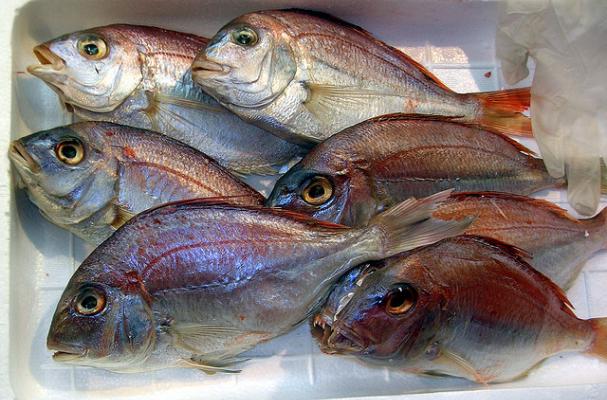
Being in a new country and ordering food that isn’t in your native language can be stressful. Some dishes can be translated easily enough while others do not leave the slightest inkling of what it could be. This especially holds true for local specialties. Fear not my fellow English speaking men and women; I have devised a guide of the top 8 fish most likely to appear on Spanish or Latin American menus so that you can order with confidence and ultimately be a happier diner.
1. Bonito is white tuna also known as albacore tuna in sushi restaurants. It is found in the Mediterranean Sea and all temperate and tropical oceans. Bonito is a fatty fish with a strong flavor. This species of fish is often seen canned and are either stored in olive oil, water, or in escabeche (marinated in an acidic liquid, usually vinegar).
2. Dorada or bream as it’s called in English is a European fresh water fish whose range extends from the Alps and the Pyrenees to the Black Sea. This fish is farmed and “wild-caught.” The wild bream’s season lasts about 2 months, from approximately September 15th to November 15th. This white fleshed fish is low in fat and is promoted as a healthy protein option.
3. Boquerones are white anchovies (not to be confused with anchoa, the darker anchovy). These small oily fishes are intensely flavored. Boquerones are usually fried whole and served as a ración, eating them from head to tail. They are also available marinated and conserved.
4. Lenguado or sole is a flat white fish that can be found on menus year round but its peak months are March and April. Sole is native to the North-East Atlantic, Baltic Sea and in the Mediterranean. This fish is low in fat and light in texture and taste.
5. Lubina (or róbalo) known as Sea Bass in English, swims mostly in the Atlantic Ocean as far North as Norway to as far as South as Senegal. The best time to eat Lubina is during the colder months. However, most of the sea bass found in fish stores and at restaurants are farmed due to the increase in price over the last few years. Lubina is a lean white fish with delicate flavor.
6. Merluza or Hake can be found almost anywhere in the world as it swims in the Atlantic and Pacific oceans as well as the Mediterranean Sea. The European hake is a low calorie and low fat white fish, prized for its subtle flavor.
7. Mero (or cherna) otherwise known as grouper who enjoys the warmer waters near Brazil or the Bahamas, and the Mediterranean Sea. The grouper is semi-fatty fish with 6 grams of fat for each 100 gram portion. Mero does not have a strong flavor but it is known for small pin bones, so be careful when eating it.
8. Rape or monkfish enjoy the European and North American coasts. Known in the culinary world as “the lobster of fish”, the monkfish‘s white meat is firm and flavorful. You will most likely see Rape in mixed fish dishes like paella.
Image Sources:











Comments
May 31, 2011
¡Olé! ;-)
June 2, 2011
I believe that Robalo has an accent over the "a", not the "o". The way you wrote it, it says "steal it", not the name of the fish. FYI.
August 24, 2011
I got my information from Eroski, a well known Spanish market, and that is the way they spelled the fish. See link http://pescadosymariscos.consumer.es/lubina-o-robalo